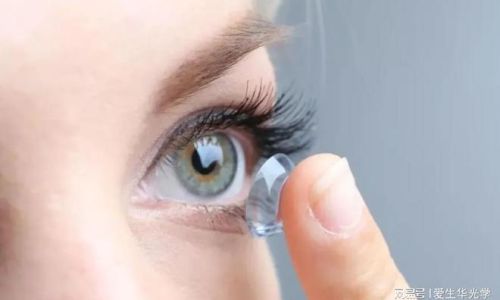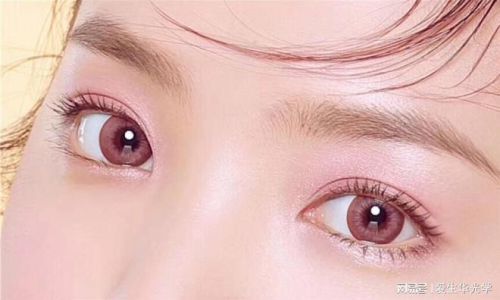Introduction

Contact lenses have revolutionized vision correction, offering a discreet and convenient alternative to traditional eyeglasses. From correcting refractive errors such as myopia (nearsightedness), hyperopia (farsightedness), astigmatism, and presbyopia to enhancing the appearance of the eyes through cosmetic lenses, contact lenses serve a diverse range of purposes. However, one of the most crucial factors influencing the comfort, performance, and suitability of contact lenses is the material they are made from. This article delves into the various materials used in manufacturing contact lenses, their characteristics, advantages, and disadvantages, helping you make an informed choice about which type best suits your needs.
Traditional Materials: Glass and Hard Plastics
The history of contact lenses dates back to the late 19th century, with the first prototypes being made from glass. While glass lenses were effective in correcting vision, they were uncomfortable, fragile, and posed a significant risk of eye injury. As a result, they were soon replaced by harder plastic materials, primarily polymethyl methacrylate (PMMA), which offered improved durability and safety but still lacked comfort.
1 Polymethyl Methacrylate (PMMA)
PMMA, also known as acrylic, was the dominant material in contact lens manufacturing for several decades due to its optical clarity, durability, and resistance to chemical and biological degradation. However, its rigidity made it uncomfortable for long-term wear, causing irritation, redness, and even corneal abrasions. Despite these drawbacks, PMMA lenses continued to be used, particularly in developing countries where more advanced materials were unavailable or unaffordable.
The Advent of Soft Contact Lenses: Hydrogels
The introduction of soft contact lenses in the 1970s marked a significant milestone in the evolution of contact lens technology. These lenses were made from hydrogels, a type of polymer that can absorb and retain water. The increased moisture content significantly improved comfort, making soft lenses a popular choice for both daily and extended wear.
1 Polyhydroxyethyl Methacrylate (PHEMA)
Polyhydroxyethyl methacrylate (PHEMA) was the first hydrogel material used in soft contact lenses. It offered improved comfort over PMMA lenses but had limitations in terms of oxygen permeability (oxygen transmissibility, or Dk/t), which is crucial for maintaining healthy corneal tissue. Low oxygen permeability can lead to corneal swelling, discomfort, and potentially serious eye health issues such as corneal neovascularization and keratitis.
Silicone Hydrogels: A Game-Changer
The development of silicone hydrogels in the late 1990s and early 2000s represented a paradigm shift in contact lens technology. These lenses combine the comfort of hydrogels with the high oxygen permeability of silicone, addressing one of the primary limitations of earlier soft lens materials.
1 Characteristics of Silicone Hydrogels
Silicone hydrogels are copolymers that incorporate silicone-based components into the hydrogel matrix. This unique combination allows for significantly higher oxygen permeability compared to traditional hydrogels, enabling extended wear periods without compromising corneal health. Additionally, silicone hydrogels often have a lower water content than hydrogels, which can reduce the risk of dehydration and improve lens stability on the eye.
2 Advantages of Silicone Hydrogels
- High Oxygen Permeability: Silicone hydrogels provide the necessary oxygen to the cornea, reducing the risk of corneal swelling and other complications associated with low oxygen transmission.
- Extended Wear Capability: Due to their enhanced oxygen permeability, silicone hydrogels are suitable for overnight and continuous wear, making them an excellent choice for individuals with active lifestyles or those who prefer not to handle their lenses daily.
- Improved Comfort: Manufacturers have refined silicone hydrogel formulations to enhance comfort, reducing the likelihood of dryness, irritation, and discomfort.
- UV Protection: Some silicone hydrogel lenses offer UV protection, which can safeguard the eyes from harmful ultraviolet radiation.
3 Disadvantages of Silicone Hydrogels
- Initial Discomfort: Some users may experience initial discomfort or a foreign body sensation when switching to silicone hydrogels, particularly if they are accustomed to traditional hydrogels. This is often due to differences in surface wettability and modulus (rigidity).
- Cost: Silicone hydrogels tend to be more expensive than traditional hydrogels, which can be a barrier for some patients.
- Lens Deposition: Silicone hydrogels may be more prone to lipid and protein deposition, which can affect visual clarity and comfort over time. Regular cleaning and disinfection are essential to maintain lens performance.
High-Water-Content Hydrogels
In response to the demand for even more comfortable lenses, manufacturers have developed high-water-content hydrogels. These lenses typically contain more than 70% water, providing a moist, gel-like feel that mimics the natural tear film.

1 Characteristics and Benefits
- Enhanced Comfort: The high water content contributes to a softer, more flexible lens that conforms well to the shape of the eye, reducing irritation and discomfort.
- Good Wettability: High-water-content lenses tend to have a smoother surface, which improves wettability and reduces the likelihood of lens binding or dry spots.
- Suitable for Sensitive Eyes: These lenses are often recommended for individuals with sensitive eyes or those who experience discomfort with other lens materials.
2 Drawbacks
- Lower Oxygen Permeability: Compared to silicone hydrogels, high-water-content hydrogels generally have lower oxygen permeability, which may limit their suitability for extended wear.
- Shorter Wear Time: Due to their higher water content, these lenses may dry out more quickly, necessitating more frequent rewetting or removal.
- Susceptibility to Dehydration: High-water-content lenses are more prone to dehydration in low-humidity environments, which can affect comfort and performance.
Specialty Materials: Gas-Permeable (GP) and Hybrid Lenses
While silicone hydrogels and hydrogels dominate the contact lens market, specialty materials such as gas-permeable (GP) and hybrid lenses offer unique advantages for certain patients.
1 Gas-Permeable (GP) Lenses
Gas-permeable lenses, also known as rigid gas-permeable (RGP) lenses, are made from fluoropolymers or silicone acrylates. These materials are highly oxygen-permeable, allowing for unobstructed oxygen flow to the cornea.
-
Advantages:
- Sharp Visual Acuity: GP lenses provide superior optical clarity and correction for irregular astigmatism and high refractive errors.
- Durability: GP lenses are resistant to deposits and are easier to clean and maintain.
- Long Lifespan: With proper care, GP lenses can last for several years, making them a cost-effective option over time.
-
Disadvantages:
- Initial Adaptation: GP lenses require a longer adaptation period due to their rigidity.
- Comfort Issues: Some patients may find them uncomfortable, particularly during initial wear.
2 Hybrid Lenses
Hybrid lenses combine the best attributes of soft and rigid lens materials. The central zone of the lens is made from a rigid, gas-permeable material for sharp vision, while the peripheral zone is made from a soft material for comfort.
-
Advantages:
- Optimal Vision and Comfort: Hybrid lenses offer the visual clarity of GP lenses with the comfort of soft lenses.
- Suitable for Complex Prescriptions: They are ideal for patients with irregular corneas, high astigmatism, or post-refractive surgery needs.
-
Disadvantages:
- Cost: Hybrid lenses are typically more expensive than either soft or GP lenses.
- Fitting Complexity: Proper fitting requires specialized training and equipment, limiting their availability.
Conclusion
The materials used in contact lenses have evolved significantly over the past few decades, driven by advancements in polymer science and an increasing understanding of ocular physiology. From the rigid PMMA lenses of the early 20th century to the advanced silicone hydrogels of today, each generation of lens materials has brought improvements in comfort, safety, and visual performance.
When choosing a contact lens, it is essential to consider your individual needs, lifestyle, and ocular health. Factors such as prescription complexity, wearing schedule, budget, and comfort preferences will all influence the most suitable lens material. Consulting with an experienced eye care professional is crucial to ensure that you receive the best possible lens recommendation tailored to your specific needs.
As research and technology continue to progress, we can expect even more innovative materials and designs in the future, further enhancing the safety, comfort, and efficacy of contact lenses. By staying informed and working closely with your eye care provider, you can make the most informed decision about your contact lens options, ensuring optimal vision and eye health for years to come.






0 comments